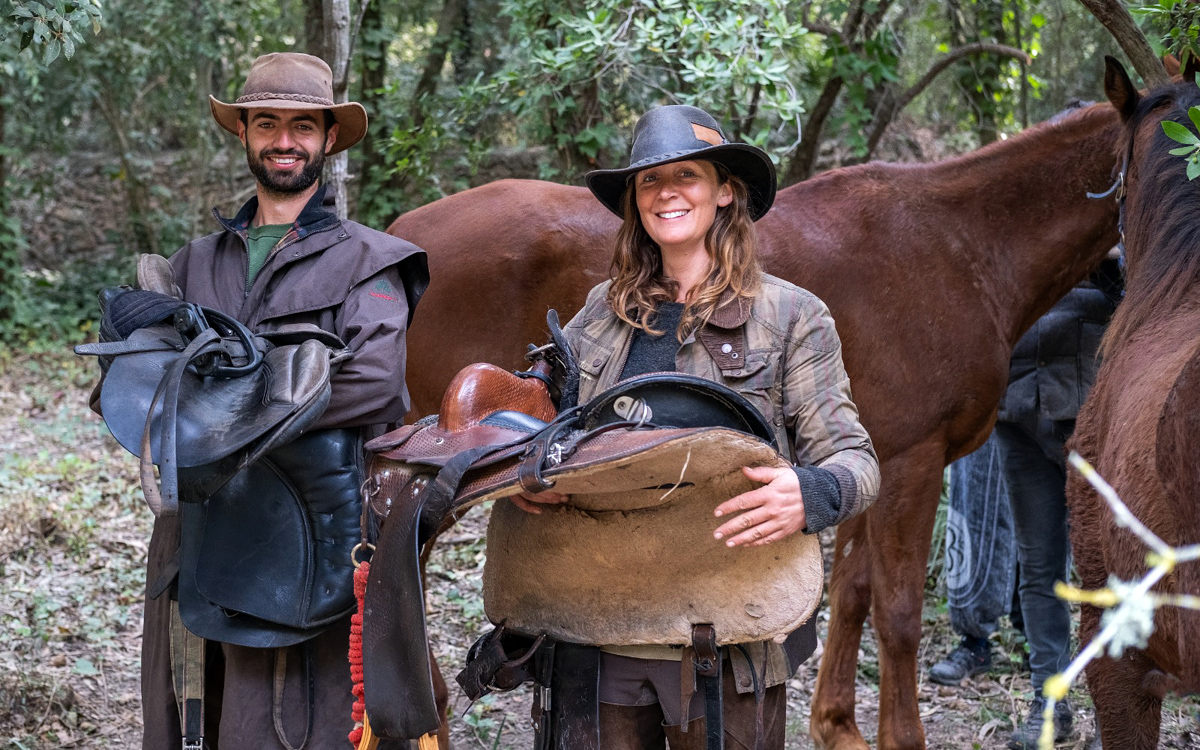The Western Saddle:
The Western saddle is renowned for its comfort, stability, and durability, making it a popular choice for trail riding enthusiasts. Its features include a deep seat, a horn at the front, and a larger skirt. Here are its pros and cons:
Pros:
- Provides excellent stability and security, especially during long hours on the trail.
- The horn can be used to secure equipment or for extra support during steep descents.
- Designed to distribute the rider’s weight more evenly across the horse’s back, reducing pressure points.
- Offers ample space for attaching saddlebags and other gear.
Cons:
- The larger size and weight of Western saddles may make them more challenging to handle and carry.
- Some riders may find the deep seat less suitable for certain riding styles or personal preferences.
- Western saddles often have fewer options for customization and fitting to individual horses.
Want to ride Western? What better place than an authentic US ranch to try it out.
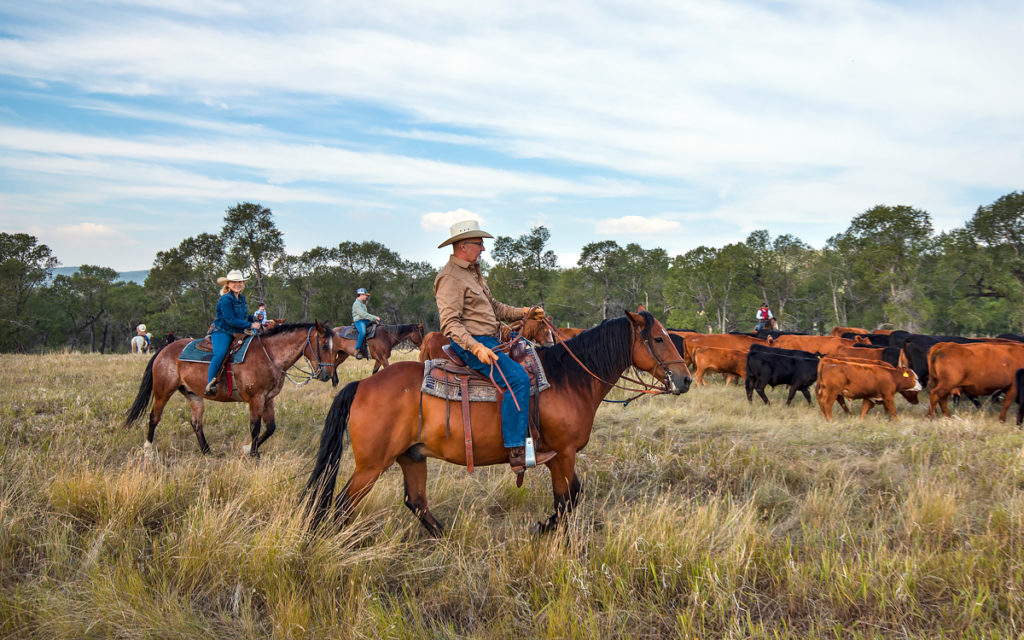
The English Saddle:
The English saddle is commonly associated with disciplines such as dressage and jumping, but it can also be an excellent choice for trail riding. English saddles are lightweight and offer closer contact with the horse. Consider the following pros and cons:
Pros:
- Lightweight and easy to handle, making them convenient for longer rides.
- Provide a closer connection to the horse, allowing riders to feel the horse’s movement more effectively.
- Offer more flexibility for various riding positions and styles.
- Tend to have more options for customization and fitting to individual horses.
Cons:
- May not provide the same level of stability and security as Western saddles, particularly during steep descents or rough terrain.
- English saddles have less space for attaching gear, which might limit storage options on the trail.
- The absence of a horn can be a disadvantage when needing extra stability or securing equipment.
Most of our trails offer English tack, as we know that this is what most of our riders are used to! Check all our trails here.
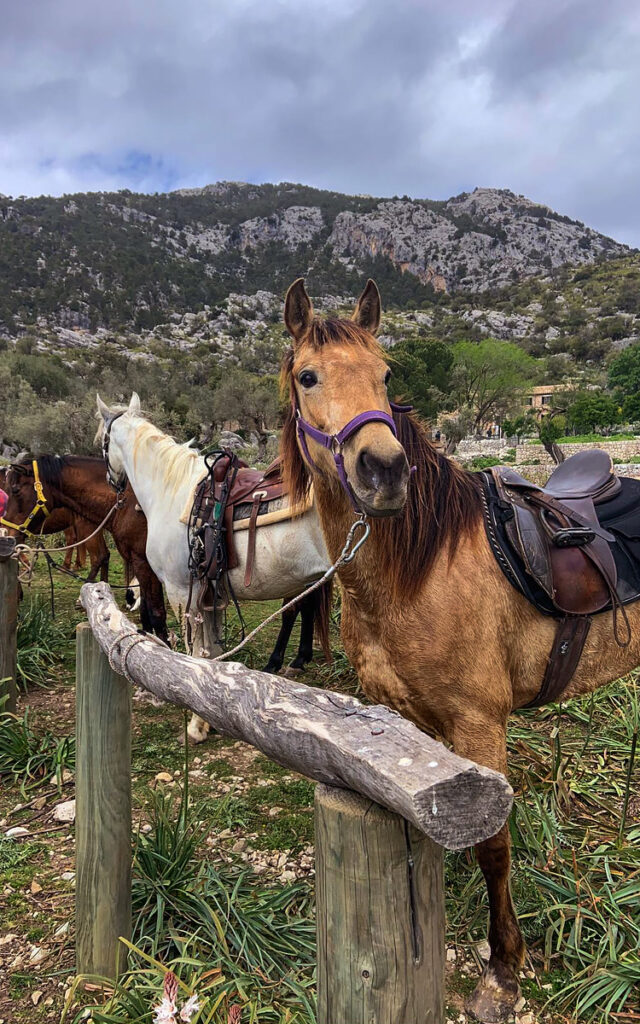
The Australian Stock Saddle:
The Australian stock saddle combines elements of Western and English saddles, making it a versatile choice for trail riding. It offers the best of both worlds in terms of comfort, stability, and security. Consider the following pros and cons:
Pros:
- Provides a deep seat and knee pads for added security and comfort on the trail.
- Features a horn for extra stability and equipment attachment.
- Allows for a more balanced distribution of weight, reducing pressure points.
- Offers good customization options to accommodate different horse breeds.
Cons:
- Australian stock saddles can be heavier and bulkier compared to English saddles, making them less convenient for long rides or carrying.
- The deeper seat may not be suitable for riders who prefer a more open and flexible riding position.
Ride with Australian tack on our horseback safaris in Kenya.
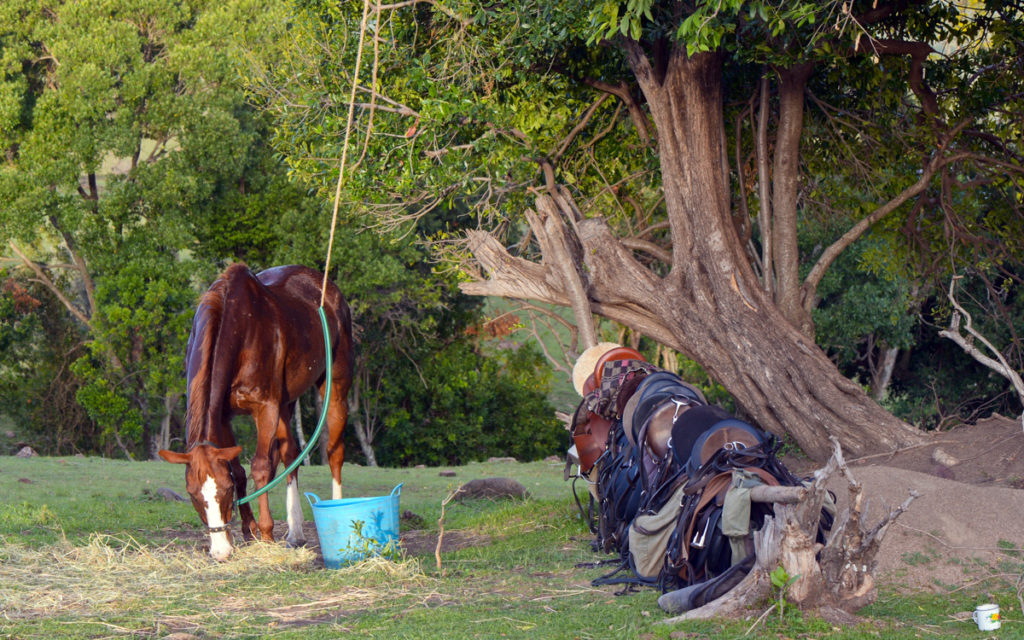
The Spanish Saddle:
Spanish saddles, also known as vaquera saddles, are traditional saddles originating from Spain. They are designed for long hours of riding and are popular for trail riding in certain regions. Consider the following pros and cons:
Pros:
- Features a deep seat and high cantle, providing excellent rider stability and support.
- Designed to distribute the rider’s weight evenly, reducing pressure points on the horse’s back.
- Offers a secure attachment for saddlebags and gear.
- Embodies a traditional and elegant aesthetic.
Cons:
- Spanish saddles may be heavier compared to English or Western saddles.
- Limited availability and customization options in some areas.
- The design may not suit riders who prefer a more open riding position or closer contact with the horse.
Ride with a mix of English and Spanish style saddles in Colombia.
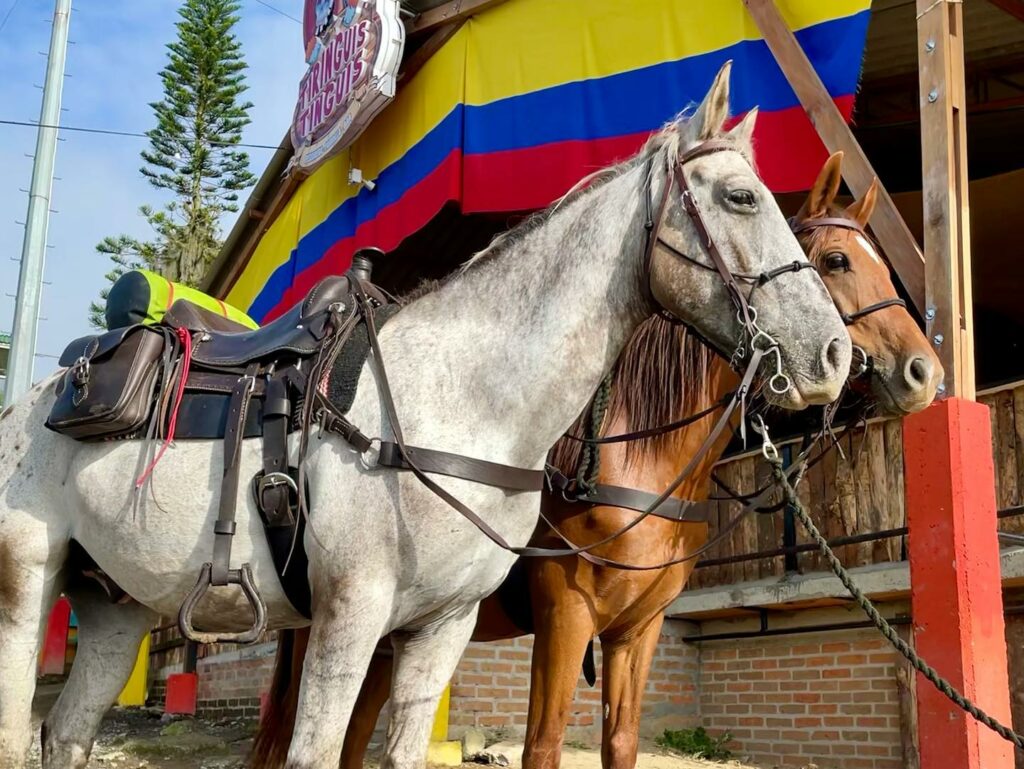
The Gaucho or Argentinian Saddle:
Argentinian saddles, also known as gaucho saddles, have a distinct design influenced by South American horsemanship traditions. They are commonly used for long-distance trail riding and working with livestock. Consider the following pros and cons:
Pros:
- Known for their durability and sturdiness, making them suitable for rugged terrain.
- Offer a secure seat and high cantle for rider stability.
- Provide good weight distribution and comfort for both horse and rider.
- Allow for customization and accessories to accommodate different riding needs.
Cons:
- Argentinian saddles can be heavy and may require additional strength to handle and carry.
- Limited availability and variations outside of South America.
- The unique design may not appeal to riders accustomed to Western or English saddles.
Ride with Argentinian tack in our Estancia Los Potreros.
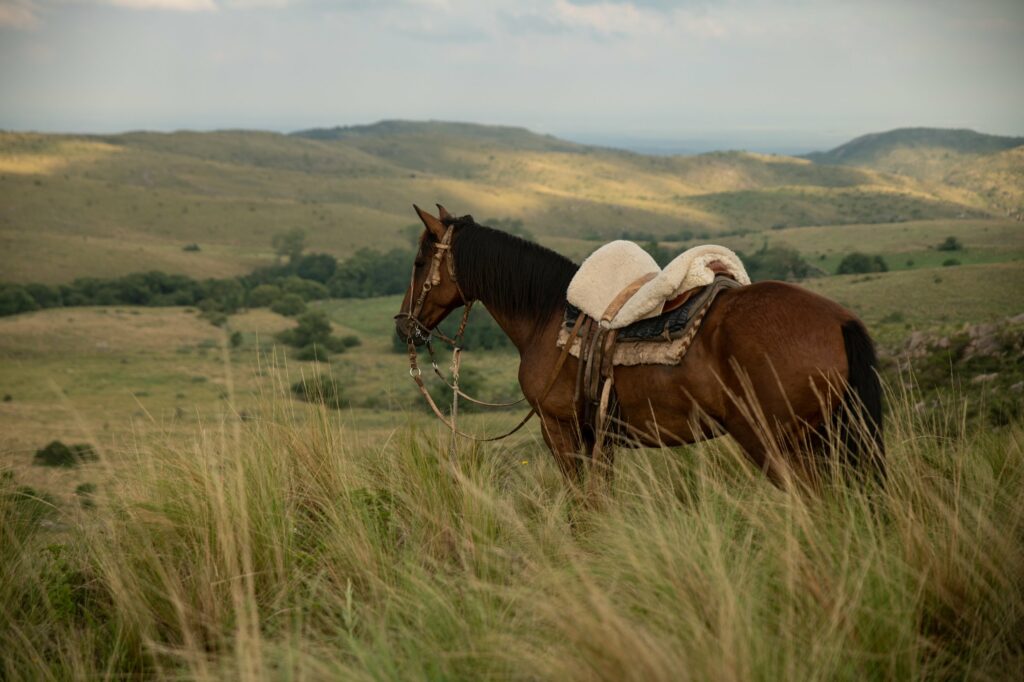
The McClellan Cavalry Saddle:
The McClellan saddle holds a significant place in history and is associated with cavalry units and military riding. Originally designed for the United States Army in the 19th century, this saddle continues to be used for trail riding by enthusiasts who appreciate its unique features. Consider the following pros and cons:
Pros:
- Lightweight and well-balanced, making it suitable for long-distance rides.
- Allows for a close contact feel with the horse, promoting communication and responsiveness.
- Features a deep seat and high pommel, providing stability and security.
- Offers good weight distribution, reducing pressure points on the horse’s back.
Cons:
- The saddle’s design may not suit all riders’ preferences or riding styles.
- Limited options for customization compared to modern saddles.
- Availability might be limited, requiring effort to find a suitable McClellan saddle.
Ride across the South African bushveld on trusted McClellan saddles.
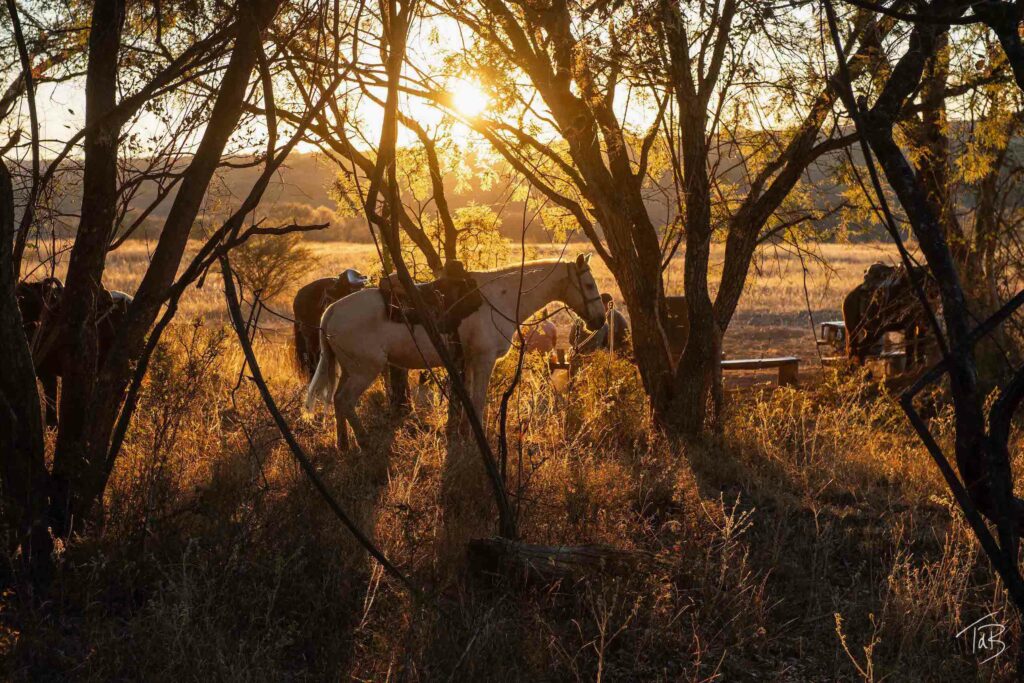
When it comes to trail riding, selecting the right tack is essential for the comfort and safety of both horse and rider. Western, English, Australian, Spanish, Argentinian and McClellan Cavalry saddles each have their own set of pros and cons, catering to different preferences and riding styles. Consider factors such as stability, comfort, weight, and customization options when making your choice, and remember that many of our partners offer different options for the riders to choose their favourite type of saddle on the trail they select, in order to have the best possible experience. Happy trails!

